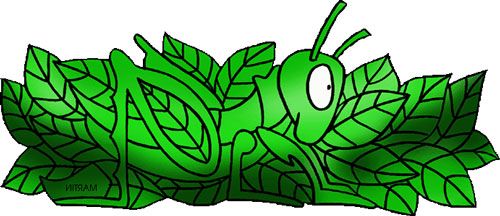What Are Animal Adaptations?
Animals have modified themselves in various ways to be able to survive in the environments where they live. Our Earth has various environments with different features and properties. For example, Deserts are dry and Polar Regions are cold. Over the time, animals have evolved with the change in Earth’s climate so that they have better chances of survival. For example, camels with their special adaptations can better survive in deserts.
Types of Animal Adaptations
There are various types of adaptations that animals gain to increase their survivability. The main types of adaptations are:
- Behavioral Adaptation – The actions and habits of an animal that they learn from events or ancestors to better survive the environment. For example, the migration of birds to different regions according to changing seasons. Many animals can use tools such as stones and sticks to gather food or get protection from predators.
- Physical Adaptations – These are the changes in the shape of animals such as skin color, structure, limbs, and other body parts to better cope with the extremities of the environment. For example, birds with long beaks can catch insects from deep cavities in the trees. Polar bears have thick skin and white fur to survive cold temperatures and disguise themselves in snow.
- Physiological Adaptations – These adaptations include changes in how the body parts of an organism will function. For example, polar bears hibernate in the winter season to decrease their food intake because food is scarce in the winter season in Polar Regions. Mammals, including humans, can maintain a constant temperature in their bodies and can tolerate both hot and cold environments.
How Animals Have Adapted to Desert?
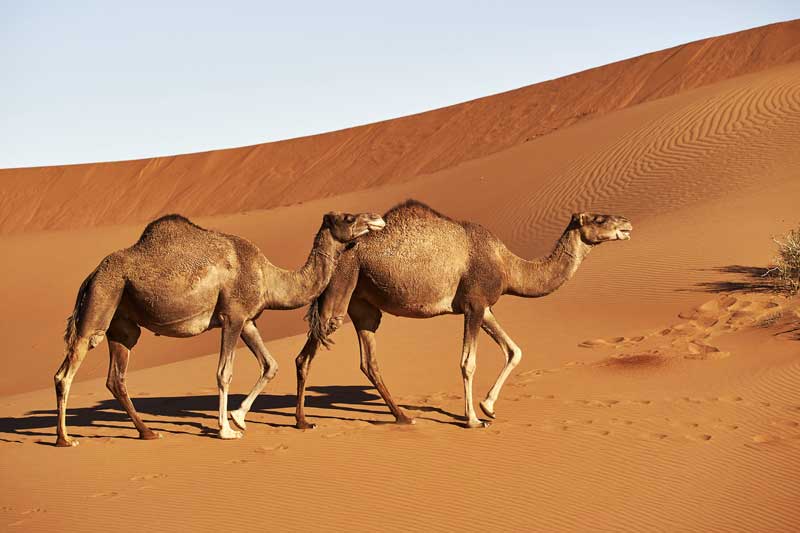 Deserts are very dry places that receive the least snowfall throughout the year. The temperature gradient in these regions is also high – means hot in the daytime and cold at night. Animals living in deserts have adapted themselves to cope with the environment and survive. Camels are one of the animals that live in deserts. They have the following adaptations for survival:
Deserts are very dry places that receive the least snowfall throughout the year. The temperature gradient in these regions is also high – means hot in the daytime and cold at night. Animals living in deserts have adapted themselves to cope with the environment and survive. Camels are one of the animals that live in deserts. They have the following adaptations for survival:
- Long eyelashes protect their eyes from sand and direct sunlight.
- They have humps on their back in which fat and vitamins are stored. When the food is unavailable they use fat from their humps to gain energy.
- Narrow nostrils help them block the sand from entering the nose while breathing.
- Tough and thick lips allow them to pick and eat spiky plants in the desert such as cactus.
- Their whole body is covered with thick fur which protects them in cold nights.
- They have wide and flat feet which keeps them from sinking into the sand.
- Their legs are longer which lifts their body quite high and protect them from the heat of the sandy ground.
- Their body color matches with the sandy environment which provides them good camouflage.
How Animals Have Adapted to Grasslands?
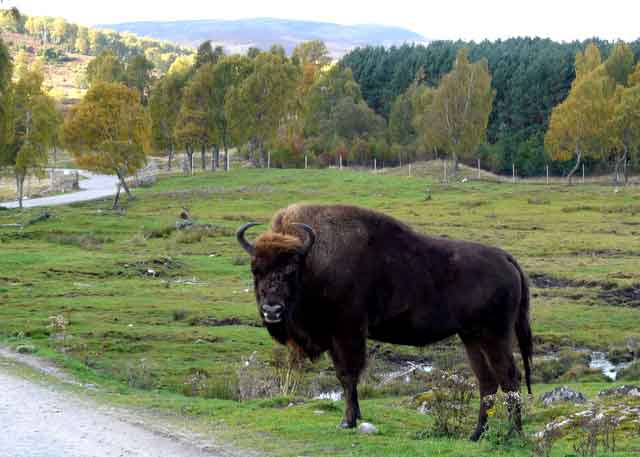 Grasslands are open grounds covered with different species of grass. They also have Trees but very less as compared to forests. They receive less rainfall as compared to forests, but rainfall is sufficient enough to support grass growth. Animals living in grasslands have adapted to open ground and grassy habitats habitat. Bison are one of the animals that live in these grasslands. The adaptations of bison for grassland are:
Grasslands are open grounds covered with different species of grass. They also have Trees but very less as compared to forests. They receive less rainfall as compared to forests, but rainfall is sufficient enough to support grass growth. Animals living in grasslands have adapted to open ground and grassy habitats habitat. Bison are one of the animals that live in these grasslands. The adaptations of bison for grassland are:
- Bison have adapted their teeth to process various species of grass in their mouth.
- In open grounds, bison can be visible from far distances. To flee from predators, their strong legs can push them to 50 kilometers per hour. Moreover, they also have sharp horns to fight off their predators.
How Animals Have Adapted to Rainforests?
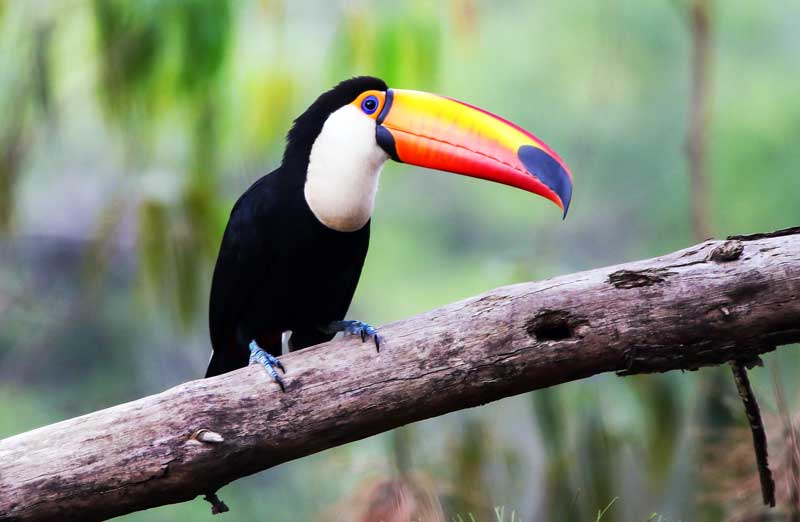 Rainforests are highly rainy regions covered with very dense plants. The Rainforest biome is very moist and hot in climate. Rainforests don’t have any scarcity of vegetation. Due to this reason, there are so many species of animals living in the rainforests compared to other Biomes. One of the famous birds living in tropical rainforests is the toucan. Toucans have many adaptations to effectively survive in rainforests. Some of the adaptations are:
Rainforests are highly rainy regions covered with very dense plants. The Rainforest biome is very moist and hot in climate. Rainforests don’t have any scarcity of vegetation. Due to this reason, there are so many species of animals living in the rainforests compared to other Biomes. One of the famous birds living in tropical rainforests is the toucan. Toucans have many adaptations to effectively survive in rainforests. Some of the adaptations are:
- Toucans love to eat fruits which they pick with their large and lightweight bill.
- Rainforests have long and short dense trees, toucans mostly sit on their branches. They have four toes in each foot for better grip.
- They have bright-colored feathers and bills which help them blend in the environment and avoid being spotted by predators.
- The eyesight of toucans is very sharp. They can spot and flee their predators in very dense forests.
How Animals Have Adapted to Polar Regions?
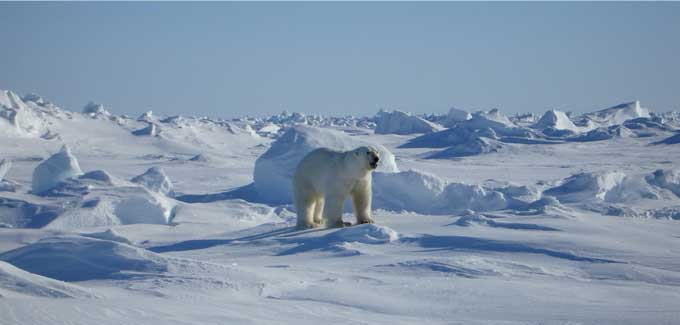 Polar Regions are very cold places on our earth that are covered with Glaciers throughout the year. These are some of the extreme environments on the earth. Animal species that can survive Polar Regions have specialized adaptations. For example, polar bears can survive in this harsh environment due to the following adaptations:
Polar Regions are very cold places on our earth that are covered with Glaciers throughout the year. These are some of the extreme environments on the earth. Animal species that can survive Polar Regions have specialized adaptations. For example, polar bears can survive in this harsh environment due to the following adaptations:
- They have a thick layer of fat, called blubber, under their skin which provides them excellent insulation to keep their body warm.
- They have white fur on their entire body which further insulates them and provide them a good camouflage to blend with the environment.
- They have wide paws with many lumps beneath which makes it easier for them to walk on the ice surface and swim in the water.
- Food is very scarce in Polar Regions, especially in the winter months. Polar bears store the food in the form of fat inside their bodies in the summer months.
Facts
- Wood frogs have a special adaptation, they freeze their entire body in cold regions and become clinically dead. They come to life again when the temperature becomes favorable.
- Kangaroo rats live in deserts and are famous for not drinking water in their entire life. They get the water from the food they eat.
